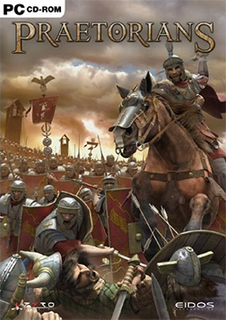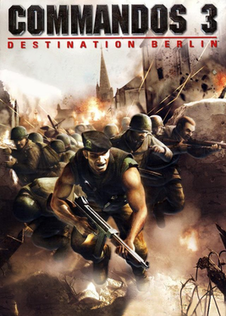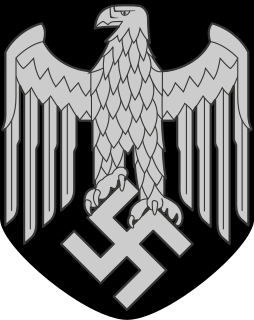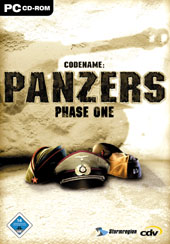
Blitzkrieg is a military doctrine in which a surprise attack using a rapid, overwhelming force concentration that may consist of armoured and motorised or mechanised infantry formations, together with close air support, has the intent to break through the opponent's lines of defense, then dislocate the defenders, unbalance the enemy by making it difficult to respond to the continuously changing front, and defeat them in a decisive Vernichtungsschlacht: battle of annihilation.

Mechanized infantry are infantry units equipped with armored personnel carriers (APCs) or infantry fighting vehicles (IFVs) for transport and combat.

The Battle of Kasserine Pass was a series of battles of the Tunisia Campaign of World War II that took place in February 1943 at Kasserine Pass, a 2-mile-wide (3.2 km) gap in the Grand Dorsal chain of the Atlas Mountains in west central Tunisia.

XXX Corps was a corps of the British Army during the Second World War. The Corps was formed in the Western Desert in September 1941. It provided extensive service in the North African Campaign and many of its units were in action at the Second Battle of El Alamein in late 1942. It then took part in the Tunisia Campaign and formed the left flank during the Allied invasion of Sicily in 1943.

Operation Cobra was the codename for an offensive launched by the United States First Army under Lieutenant General Omar Bradley seven weeks after the D-Day landings, during the Normandy campaign of World War II. The intention was to take advantage of the distraction of the Germans by the British and Canadian attacks around Caen in Operation Goodwood, and thereby break through the German defenses that were penning in their forces while the Germans were unbalanced. Once a corridor had been created, the First Army would then be able to advance into Brittany, rolling up the German flanks once free of the constraints of the bocage country. After a slow start, the offensive gathered momentum and German resistance collapsed as scattered remnants of broken units fought to escape to the Seine. Lacking the resources to cope with the situation, the German response was ineffectual and the entire Normandy front soon collapsed. Operation Cobra, together with concurrent offensives by the British Second Army and the Canadian First Army, was decisive in securing an Allied victory in the Normandy campaign.

Axis & Allies: Europe is a strategic board wargame produced by Hasbro under the Avalon Hill name brand. Designed by Larry Harris, who designed the original Axis & Allies board game, Axis & Allies: Europe focuses game play on the European Theatre of World War II.

Hearts of Iron II is a grand strategy computer war game for the PC based upon its predecessor, Hearts of Iron, which was developed by Paradox Development Studio and published by Paradox Interactive.

A panzer division was one of the armored (tank) divisions in the Wehrmacht of Nazi Germany during World War II. Panzer divisions were the key element of German success in the blitzkrieg operations of the early years of World War II. Later the Waffen-SS formed its own panzer divisions, and even the Luftwaffe fielded a panzer division: the Hermann Göring Division.

The Russian Campaign is a strategic board wargame set in the Eastern Front during World War II, during the period 1941-45. The unit scale is German Corps and Soviet Armies and roughly covers the Berlin to Gorki region and Archangelsk to Grozny. A full campaign game covers the June 1941 to June 1945 period but numerous shorter scenarios are commonly played.

The 9th Panzer Division was a panzer division of the Wehrmacht Army during World War II. It came into existence after 4th Light Division was reorganized in January 1940. The division was headquartered in Vienna, in the German military district Wehrkreis XVII.
The 2nd Panzer Army was a German armoured formation during World War II, formed from the 2nd Panzer Group on October 5, 1941.

Pacific General is a computer wargame depicting famous battles of the World War II Pacific campaigns. It was published by Strategic Simulations in 1997 using the same game engine of the earlier and successful Panzer General for Windows 95. It was re-released on GOG.com in May 2015.

Praetorians is a 3D real-time tactics video game developed by Pyro Studios and published by Eidos Interactive in 2003, based on Julius Caesar's historical campaigns in Gaul and Britain, Crassus' battles in Parthia, and the events of Caesar's Civil War during the 1st century BC. The player controls either the Roman Republic, the Ptolemaic Kingdom, or a generic barbarian tribe based on the Helvetii, Gauls, and Celts.

Company of Heroes: Opposing Fronts is the stand alone expansion pack to Company of Heroes, a real-time strategy game for computers running the Windows operating system. Opposing Fronts was developed by Canadian-based RTS developer Relic Entertainment, and published by THQ. The game was released on September 25, 2007, in the US and September 28 in Europe. Another standalone expansion to the CoH series, Tales of Valor, was released in April 2009. The game was released as a DLC on IPadOS on April 13, 2020.

Commandos 3: Destination Berlin is a real-time tactics video game, the third installment of the Commandos series. It is developed by Pyro Studios and published by Eidos Interactive. The game is the first in the series to use a true 3D engine, and the last to use real-time tactics before being converted to a first-person shooter genre.

The German Army was the land forces component of the Wehrmacht, the regular German Armed Forces, from 1935 until it ceased to exist in 1945 and then was formally dissolved in August 1946. During World War II, a total of about 13.6 million soldiers served in the German Army. Army personnel were made up of volunteers and conscripts.

The Belgrade offensive or the Belgrade strategic offensive operation was a military operation during World War II in Yugoslavia in which Belgrade was liberated from the German Wehrmacht through the joint efforts of the Soviet Red Army, Yugoslav Partisans, and the Bulgarian Army. Soviet forces and local militias launched separate but loosely cooperative operations that undermined German control of Belgrade and ultimately forced a retreat. Martial planning was coordinated evenly among command leaders, and the operation was largely enabled through tactical cooperation between Josip Broz Tito and Joseph Stalin that began in September 1944. These martial provisions allowed Bulgarian forces to engage in operations throughout Yugoslav territory, which furthered tactical success while increasing diplomatic friction.

Codename: Panzers – Cold War is a real-time strategy video game developed by Hungarian studio InnoGlow and published by Atari. A sequel to Codename: Panzers, it was previously developed by Stormregion software, to be published by 10tacle, before both companies went bankrupt in 2008.

Combat Mission is the name of a successful series of computer wargames simulating tactical battles. The series has progressed through two distinct game engines. The original game engine, referred to as 'CMx1' by the developer, Battlefront.com, powered a trio of games set in the Second World War. Combat Mission: Shock Force was released in July 2007 as the debut of the 'CMx2' game engine. The Combat Mission games are a mixture of turn-based gameplay and simultaneous real-time execution. The game environment is fully three-dimensional, with a "Wego" style of play wherein each player enters their orders into the computer simultaneously during pauses in the action, and then are powerless to intervene during the action phase. More familiar turn-based games use an "I-go/You-go" system of play.
The XIX Army Corps was an armored corps of the German Wehrmacht between 1 July 1939 and 16 November 1940, when the unit was renamed Panzer Group 2 and later 2nd Panzer Army. It took part in the Invasion of Poland and the Battle of France.

















